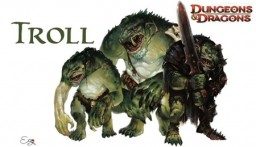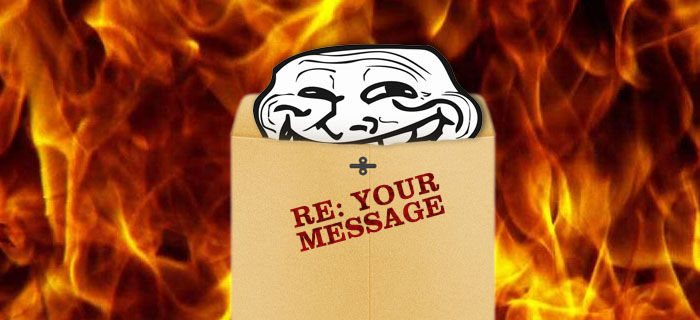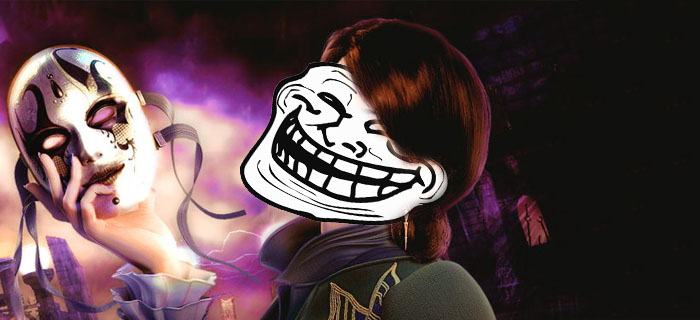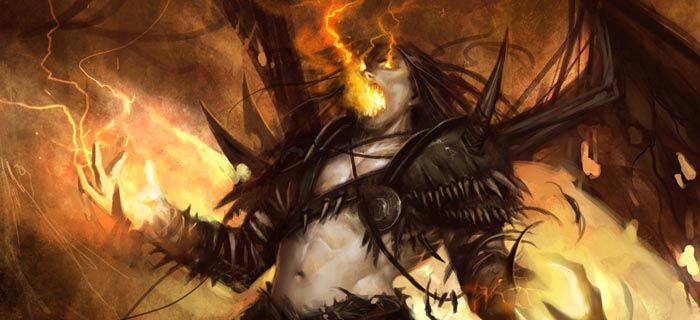Tips for Behaving in Dungeons and Dragons

Hehehe....get it?
Table etiquette is extremely important when playing an in-person game of Dungeons and Dragons. In fact, it’s probably the most important aspect of the game, next to role playing, combat, experience, magic items, and rolling the dice, but I digress. You need to be able to present yourself correctly while at a D&D table in order to be an effective player. You also need to translate this into the game itself when choosing or planning actions for your character.
Whether you roleplay to your heart’s content or just want to troll the rest of the table…this article is for you.
Roleplayers not-so-anonymous
So, you like to roleplay. There’s nothing wrong with this, other than the fact that it makes you a huge nerd. There are a few things you can do to increase your table presence if you get off on getting into character.
- Use a different accent: Everyone knows that Dwarves are Irish or Scottish, elves speak in wispy voices, and halflings or gnomes talk as annoyingly as possible. So, if you’re playing one, you should talk just like them! More points to you if you can speak the actual language that your character speaks on your character sheet. Double points if noone else at the table does, but you carry on anyway.
- Dress up: Nothing will intimidate your fellow adventurers and the DM more than dressing up as your character. Cape, armor (cane be made of plastic/cardboard), weapon… the whole nine yards. Everyone will be in awe of your dedication to the game.
- Insist all other players roleplay in costume as well: Because let’s face it- you’d feel silly doing it by yourself.
Power gaming like a boss
Sometimes, you just want to kill some orcs. Your sword seeks blood while your armor does not, so you want to maximize your efficiency. Aside from perfecting your rolling skills, you can also take a few precautions at the table to help you out.
- Yell at everyone to be quiet while you think about your turn: You don’t want to be distracted when you’re looking to do the most damage while taking the least number of hits possible. So, you’ll need a little quiet. Demand that other players defend you as you use a risky maneuver. If they die, at least they can be glad you survived unscathed.
- Complain to your DM on close dice rolls: If you roll a 16 when you need a 17 to hit a monster, discuss with your DM that your character can second guess the sword swing and adjust in mid-swing.
- If treasure that you need shows up, let players know: Treasure is dropped that more than one person wants to collect and equip; it happens. But you, you’re special. You need that treasure because your current equipment is lacking. Instead of proposing to roll for the equipment or something to that effect, claim it for yourself and don’t let the other players near it. They’ll thank you later when that +1 to your arm slots makes you that much more effective in combat.
The game is only fun if you’re Lawful Good
You rolled a Paladin who worships Bahamut. Therefore, the Evil must be punished and laws must be upheld. If your party doesn’t think the same way? Fuck them. They’re not playing the game right.
- Stop every criminal in town you’re situated. It doesn’t matter if they committed murder or petty theft. It is your duty to make sure they receive justice at the end of your sword.
- If one of your party members performs a crime for any reason, immediately declare mortal combat and fight him or her to the death. You will be appreciated for how well you are keeping your alignment.
- If anyone in your party wants to fight a character that follows laws or is some kind of guard, refuse to do so. In fact, join the guards.
The game is only fun if you’re Chaotic Evil
It doesn’t matter what class or race you are, you just want to be an Evil Bastard. Your DM allows this, so your only purpose is to troll the entire campaign.
- Your party encounters an NPC? Kill her.
- Your party gets treasure? Take it.
- Your party goes to a dungeon which is tenuously held together with pillars? Destroy the pillars, forcing everyone to run for their lives.*
- You find a small child in a village eating ice cream? Clobber him; take the ice cream.**
Other tips & summary
- Take as much time as you need to plan out your turn, but only when it’s time for your turn. The DM and other players will appreciate you taking 10 minutes to make 1 attack, which allows them to think about their moves and what their characters are going through at the moment.
- Search for traps. Everywhere.
- If you’re drinking soda, belch loudly. This is something nerds do around other nerds, and you will be further inducted into your table’s inner circle by proving your nerdiness.
- If you’re of legal drinking age, make sure to do some pre-game drinking before the session begins. D&D is way more fun if you’re drunk, especially when nobody else is.
And there you have it. Not only are these some prime tips about how to behave around a table of your peers in a game of Dungeons and Dragons, but also tips for how you should behave as your character in order to make the game better for everyone involved! In the next D&D article, I’ll be delving into the specific roles one can play, be it the mystical mage, the stalwart fighter, or even the mysterious Dungeon Master!
*Yes, this is something that has happened in one of my games. My players destroyed a tower which I had been designing for several days before that session. Dicks.
**Steal the recipe for ice cream, open a chain of Chaotic Evil Iced Treats, and get that money. ~WiNG







I’m interested in learning more about the lawful good/chaotic evil stuff. Never played D&D myself, but what are all the permutations?
New-school D&D uses a 5-item Alignment list. Lawful Good, Good, Unaligned, Evil, and Chaotic Evil. However, the older list (which you can see in the Lawful Good section thanks to Batman) also contained Chaotic Good, Lawful Evil, and Chaotic/Lawful Neutral with True Neutral in the middle.
Basically, this is the general mindset of the character. For example, let’s take a character you’ve probably heard of: Robin Hood. He stole from the rich, so he was committing a crime, but he was using that for the good of the lowly neglected poor by using that money to feed them. This is Chaotic Good, where you feel you must do whatever you can however you can for the Greater Good.
Chaotic Evil basically means being a huge dick though. What I wrote looks like trolling. It’s basically a Chaotic Evil Player Character in a nutshell though.
Very interesting! Also sounds like a fun way analyze characters in TV shows, life, etc. Why did they eliminate the more nuanced list? Seems like they decided that being chaotic can’t go with being good. I definitely disagree with that.
The move to the 5-item list was to simplify things. It’s possible to make a house-rule to use the old list (as is the way with anything in D&D, you can always make your own rules), but when Wizards moved to 4th Edition, a lot of things got simplified to help initiate new players more easily into the game. Alignment was just one of those things.
HATE 4.0. It’s nothing but a board game without the board.
The true spiritual successor to D&D is in Pathfinder. There’s been some simplification in rules, such as skills and the grapple system, improvements in feats and classes (paladins are awesome now), and kept the spirit of 3.5 alive.
If my group of nerds aren’t playing Pathfinder, we’re playing 3.5.
The D&D alignment chart has always been a source of discussion and humor, though I personally find the Magic color wheel to be far more versatile and accurate.
For instance, how would you place someone like George Bush on this scale? While I didn’t condone his actions, I wouldn’t say he’s evil. Is he neutral? He worked for the law, but also broke laws. It would be much easier to place him as a White/Red or even Red/White/Black.
Summary: I’m a terrible nerd.
http://www.youtube.com/watch?v=SouhxAZoTi4
Hah, very entertaining.